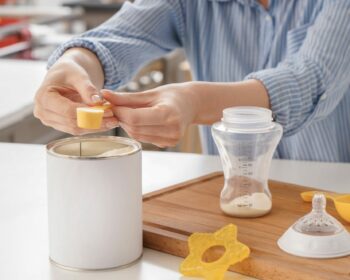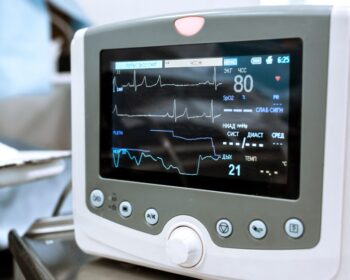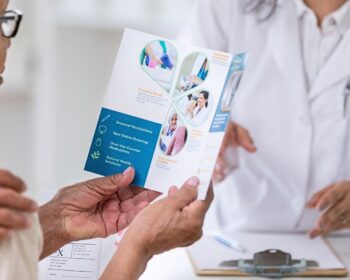The answer to the above question is: “it appears so”, and this is the topic of my blog of today – algae. You might remember my last Medfiles blog, in which I gave my expert view on animal feed trends in the changing world, that already touched upon the topic of algae. Indeed, the European algae sector has good potential to become a significant part of the blue economy in Europe.
Naturally, the same challenges that I presented in the feed trend blog apply equally to food – the feed chain is only the first part of the food chain, although often this division is omitted, and the food chain is considered also to include the feed chain. From farm to fork, as the saying goes.
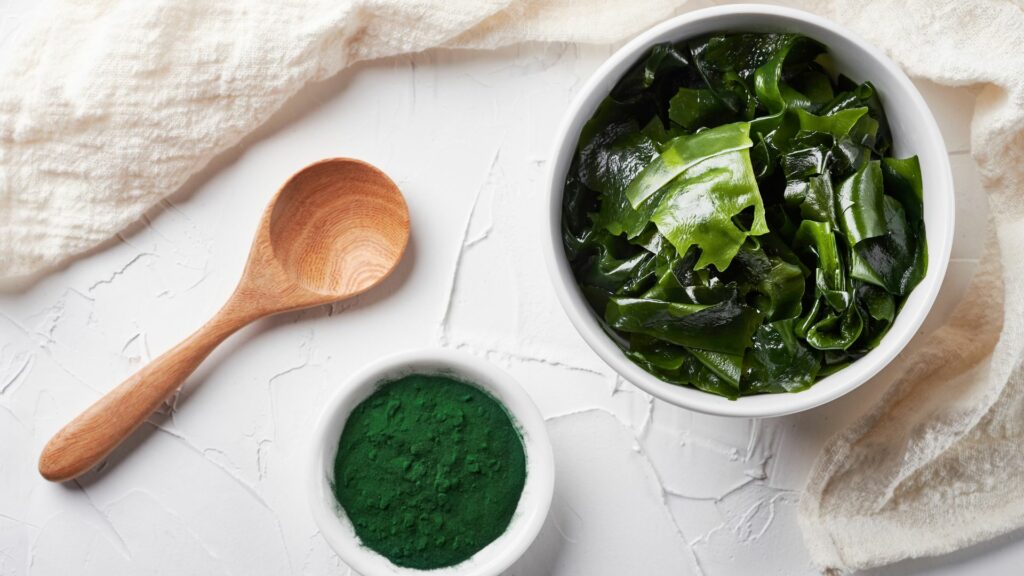
Therefore, this text consists of two parts. First, to set the scene, I will not only be returning to my earlier feed trend blog but also extending the current challenges to livestock husbandry. In the second part, I will discuss the growing attention to algae and reflecting on how this brings novel foods to the centre of the discussion.
Current primary production has its challenges, but without it there would be no food or food ingredients
It is clear that without primary production, conventional or modern, foods and their ingredients simply could not exist. So, let’s discuss primary production first. In my previous blog on feed trends, I discussed these current challenges in primary food production:
“We have all followed the news with a careful ear over the past year, so it is probably not a big surprise to anyone that the agricultural sector is struggling in many ways. Farmers across the world are facing major financial difficulties in continuing with their livelihood. Since the war in Ukraine began, fertiliser and energy prices have soared, increasing the financial burden that farmers were facing already before this major conflict in Europe.”
“The inflation, caused by the Covid years and the war, has affected all agricultural inputs, such as the prices of plant protection products and required machinery, and generally all costs of living. Some farmers encounter serious problems even in getting hold of fertilisers because they are simply not available, and the same applies to the availability of skilled labour. Many farmers are contemplating whether to continue with farming at all, because it simply does not bring appropriate income to pay the bills, or whether to cultivate fewer hectares with the money in hand, even if it brought less income for the coming years. “
“In addition to the high prices of farming inputs, also climate change affects the agricultural sector and its grip is not easing. This can be seen in the form of hotter summers, increased amounts of forest and bush fires, floods and winds and other extreme weather conditions, all impacting the lives of farmers. Climate change makes farming highly challenging due to the unpredictable weather, increased events of plant diseases and a surge of presence of mycotoxins in the agricultural crops.”
While thinking about the feed chain forming the first part of the food chain, it is easy to understand that everything that impacts feed production causes a domino effect on the rest of the food chain. When prices of animal feed, energy and living are getting higher, livestock farmers feel this later in the chain. Animals need nutritious feed and plenty of clean drinking water to stay healthy and consequently be productive. They also need heating or cooling, depending on location or season, and they need experienced staff to take care of them. Optimal animal welfare improves not only animal well-being but also food production. It is clear to livestock farmers that sick animals must be treated. However, the prices of veterinarian fees and veterinary medicinal products have also gone up. Thus, livestock farmers have to carefully calculate their euros to decide whether to send sick animals to slaughter or to call the veterinarian, all the while knowing that treatment requires expensive medicines and that tending to treated animals requires more time. On top of this, there are losses in food production, for example milk from medicated dairy cows cannot be submitted to the diary, beef cattle and farmed fish grow slower and eggs cannot be delivered to the distributor.
While all of this is going on, the farming of food and feed crops as well as livestock husbandry should be environmentally sustainable and high animal welfare standards should be adhered to. Organic farming has increased over the past decades, but the unfortunate fact is that it is not sufficiently efficient to produce enough feed and food for the needs of the constantly growing world population. We should not forget that at the end of the feed and food chain, there’s always the consumer. This consumer often likes meat, and the number of these consumers is only rising, as the lower-class consumers in China, India and Africa are becoming middle class consumers. Some estimates show that the global meat consumption has increased from 150 million tons of meat in 1990 to 300 million tons in 2021. The price the farmer gets from the produced feed and food products, however, remains low to cover all the inputs and salaries. Thus, it is no wonder that so many farmers have already thrown in the towel because farming simply does not pan out.
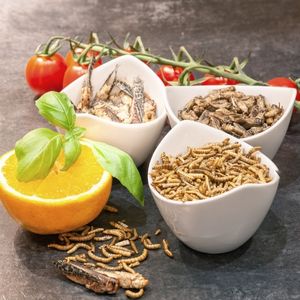
Free Webinar: Novel food classification and route to novel food authorisation in the EU
In this practical webinar you’ll get an overview of the classification of potential novel foods, the official consultation procedure, as well as the novel food authorisation process and its requirements. We will also go through a success story of a marine novel food authorisation in which we assisted our client.
Huge political and financial push for algae from the European Green Deal
As seen from the ongoing events described above, it is evident that feed and food companies are searching for alternative protein and other macronutrient and micronutrient sources than conventional or organic farming and animal husbandry can provide. In addition, farmers are also looking for alternative ways to produce food and feed but with less expensive inputs and highly valuable outputs. Here algae represent an important avenue not only for business but also for primary food and feed producers. In November 2022, the European Commission published its initiative “Towards a strong and sustainable EU algae sector”, where the Commission outlines the importance of algae in the production of food, feed, cosmetics, pharmaceuticals, nutraceuticals, fertilisers, bio-based packaging and biofuel in Europe. With this initiative, the Commission aims at promoting the farming of seaweed and microalgae, improving business environments and closing knowledge and technology gaps. The initiative is a part of the European Green Deal, an action plan striving to make Europe the first climate-neutral continent. Presently, foods sourced from the seas and the ocean is only 2% of all human food, despite that they cover over 70% of the Earth’s surface.
The Commissions’ strategic guidelines for a more sustainable and competitive EU aquaculture for 2021–2030 stress the need to promote the farming of algae – both macroalgae (seaweed) and microalgae. Simultaneously, though, the production needs to be environmentally sustainable. Estimates presented in the above initiative foresee that European demand for seaweed could increase from around 270 000 tonnes in 2019 to 8 million tonnes in 2030 and reach EUR 9 billion in value in 2030, creating around 85 000 jobs. The current European seaweed industry is more focused on harvesting seaweed from the wild rather than cultivating it in aquaculture facilities, while microalgae can also be produced on land, in inland, far away from the seashore. The Commission anticipates that market demand for microalgae, such as chlorella and cyanobacteria spirulina, is also growing in the EU. To get an idea of the growth rate, the demand for food and drinks containing seaweed increased in Europe by a factor of 2.5 between 2011 and 2015.
Funding has also been made available and will be made available. In recent years, the Commission has supported many algae-related initiatives and projects. The EU research and innovation funds call for applications (Horizon 2020, Horizon Europe), then there is the European Maritime and Fisheries Fund and the European Regional Development Fund.
Algae are of high interest. They are low in fat and rich in dietary fibres, micronutrients and bioactive compounds. Therefore, algae are often presented as a healthy low-calorie food, with some species known for having a particularly high protein content. Their biochemical compounds and properties make algae a valuable material for a growing number of other commercial applications, such as animal and fish feed and feed additives, pharmaceuticals, nutraceuticals, bio-based packaging, fertilisers and cosmetics. However, one major hindrance for the growth of the algae sector are the 10 different EU Regulations, a problem which is also acknowledged by the European Commission. One of these is the EU Regulation on Novel Foods, one of the many EU Regulations and areas we know inside out at Medfiles, as we have been assisting our clients that work with algae.

Medfiles knows algae – and the EU and UK novel food legislation
When the protein source is algae and not a conventional source, these foods fall under the novel food regulation, unless they have already been authorised or have been historically used as food. Similarly, isolated new ingredients, such as oils and nutrients, are considered novel foods unless they have already undergone the rigorous EU authorisation process, or unless the substance is equivalent to a currently permitted one and is not metabolised differently in humans. Several food additives and as well as feed materials or additives of algae origin have been on the market for a long time.
It is also good to bear in mind that the algae and ingredient boom is also going on in Europe’s neighbouring Brexit country. In the UK, changes in novel food legislation are expected in the coming years with a simpler framework than on the continental side of Europe.
We at Medfiles keep a close look on these developments in the field of algae and are regularly very much involved in client cases concerning algae and their ingredients. It is great to be at the forefront of this new trend and help our clients forward in the algal ingredient business, in both of our core areas of expertise: food, particularly novel food, and feed materials and additives. Algae and algal ingredients are certainly only increasing in the future, and as discussed above, the algae industry is now getting a big boost from the EU as well.
We would be delighted to hear about your algal ingredient ideas and explore them further. I am positive that these discussions would be fruitful for both parties – you and the Medfiles experts.
I hope this brief text gave you some food for thought about algae and algal food and feed ingredients and how they can provide us not only new food and feed sources, but also income and new jobs. And all of these we desperately need in this economic and environmental situation.
Whenever you need assistance with regulatory affairs on human food, animal feed or cosmetics, we are at your service and more than happy to help you!

Author: Dr Mari Eskola, Senior Regulatory Affairs Expert, Team Leader of Regulatory Science and Reports Team, Unit on Food & Feed and Cosmetics, Medfiles Ltd
Mari Eskola joined Medfiles in 2021. Since then, she has been involved in several projects on food, feed and cosmetics conducted for Medfiles’ clients. Mari is a food chemist specialised in analytical chemistry and in 2002, she obtained a PhD degree in food science. Mari has over 25 years of international expertise in the chemical and regulatory safety of food and feed from the European Union and European national organisations as well as from the industry. She has worked for 10 years at the European Food Safety Authority (EFSA), carrying out EFSA regulatory risk assessments of contaminants in foods and feeds, where she also worked as acting and deputy head of the EFSA Contaminants Unit.
In addition, Mari has food and feed research and regulatory expertise from various other European institutes, such as the European Commission Joint Research Centre (EC JRC), the European Chemicals Agency (ECHA), Teagasc in Ireland, the Austrian University of Natural Resources and Life Sciences and the former Finnish Food Safety Authority. Mari has international experience in managing projects and people, and she has authored several scientific publications comprising also many scientific EFSA opinions and risk assessments.
References:
European Commission, 2022. Communication from the Commission to the European Parliament, the Council, the European Economic and Social Committee and the Committee of the Regions. Towards a Strong and Sustainable EU Algae Sector. Brussels, 15.11.2022, COM(2022) 592 final. Available at: https://oceans-and-fisheries.ec.europa.eu/system/files/2022-11/COM-2022-592_en.pdf
European Commission, 2022. Commission proposes action to fully harness the potential of algae in Europe for healthier diets, lower CO2 emissions, and addressing water pollution. Press release, 15.11.2022. Available at: https://ec.europa.eu/commission/presscorner/detail/en/ip_22_6899
Regulation (EU) 2015/2283 of the European parliament and of the Council on novel foods, amending Regulation (EU) No 1169/2011 of the European Parliament and of the Council and repealing Regulation (EC) No 258/97 of the European Parliament and of the Council and Commission Regulation (EC) No 1852/2001. https://eur-lex.europa.eu/eli/reg/2015/2283/oj
